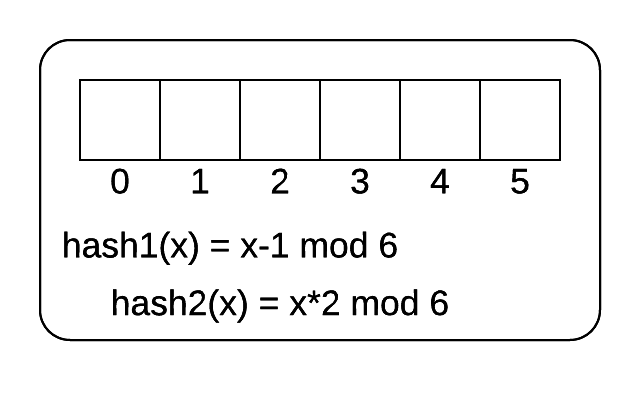What will happen to the cuckoo hash table?
The following image shows an empty cuckoo filter . There are 6 buckets and 2 hash functions. The hash functions are shown. The following 5 numbers are inserted into the hash table.
[3, 7, 14, 15, 19]
 Cukoo filter
Cukoo filter
For reference, here is how the cuckoo filter works:
1 2 3 4 5 6 7 8 9 10 11 12 13 14 15 16 17 |
|
Fill your answer in as a list of numbers. Leave a list slot empty if the corresponding bucket in the cuckoo table stays empty.
This section requires Javascript.
You are seeing this because something didn't load right. We suggest you, (a) try
refreshing the page, (b) enabling javascript if it is disabled on your browser and,
finally, (c)
loading the
non-javascript version of this page
. We're sorry about the hassle.
This hash table will put in the items in the following order:
Because we have encountered a loop, this hash table must be resized. This hash table has been poorly made because it only has 6 buckets and we wanted to insert 5 items. The probability that we would need to resize the hash table was very large. If we double the size of this hash table, this probability will be greatly reduced.
This can also be visualized by making a cuckoo graph from this cuckoo table. In the resulting bipartite graph, there will be two edges from the 3rd node on the left side to the 1st node on the right side. This results in infinitely many cycles in a connected segment of the graph (and two cycles of length 2). This means the table must be resized.